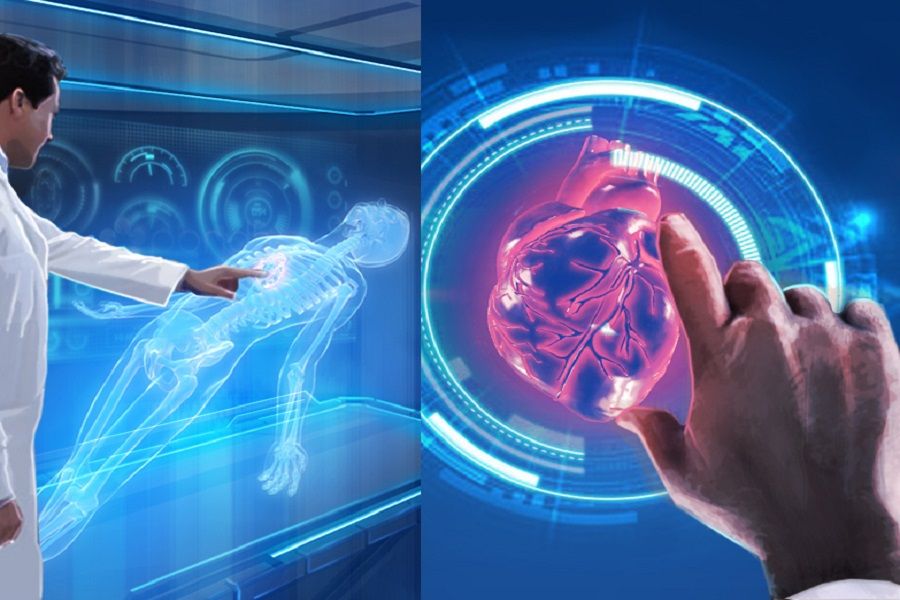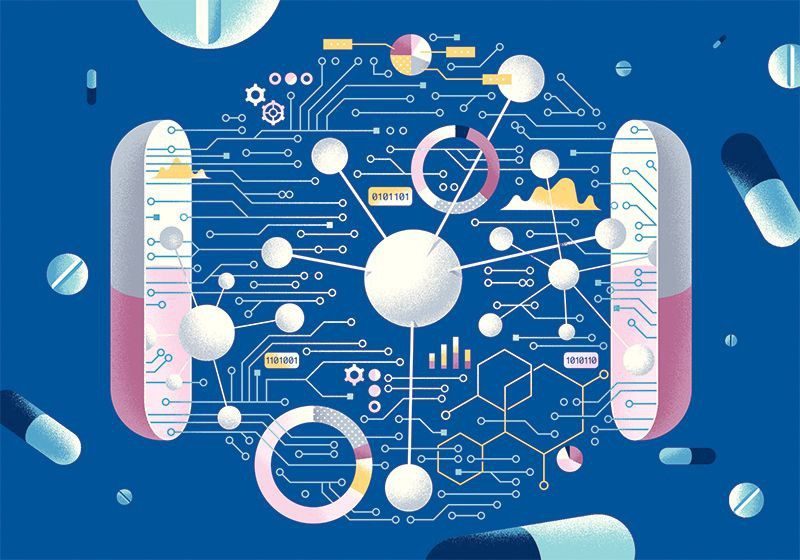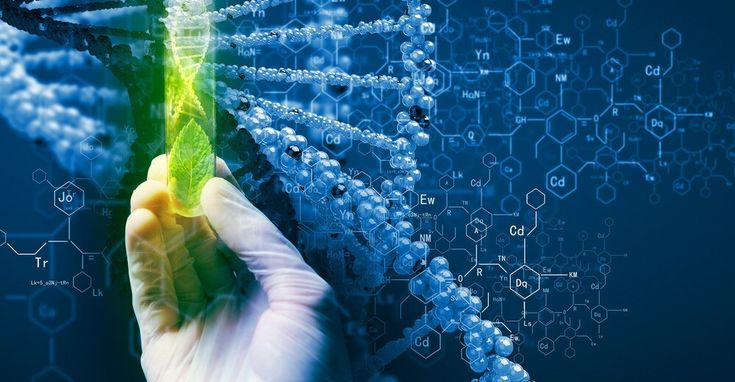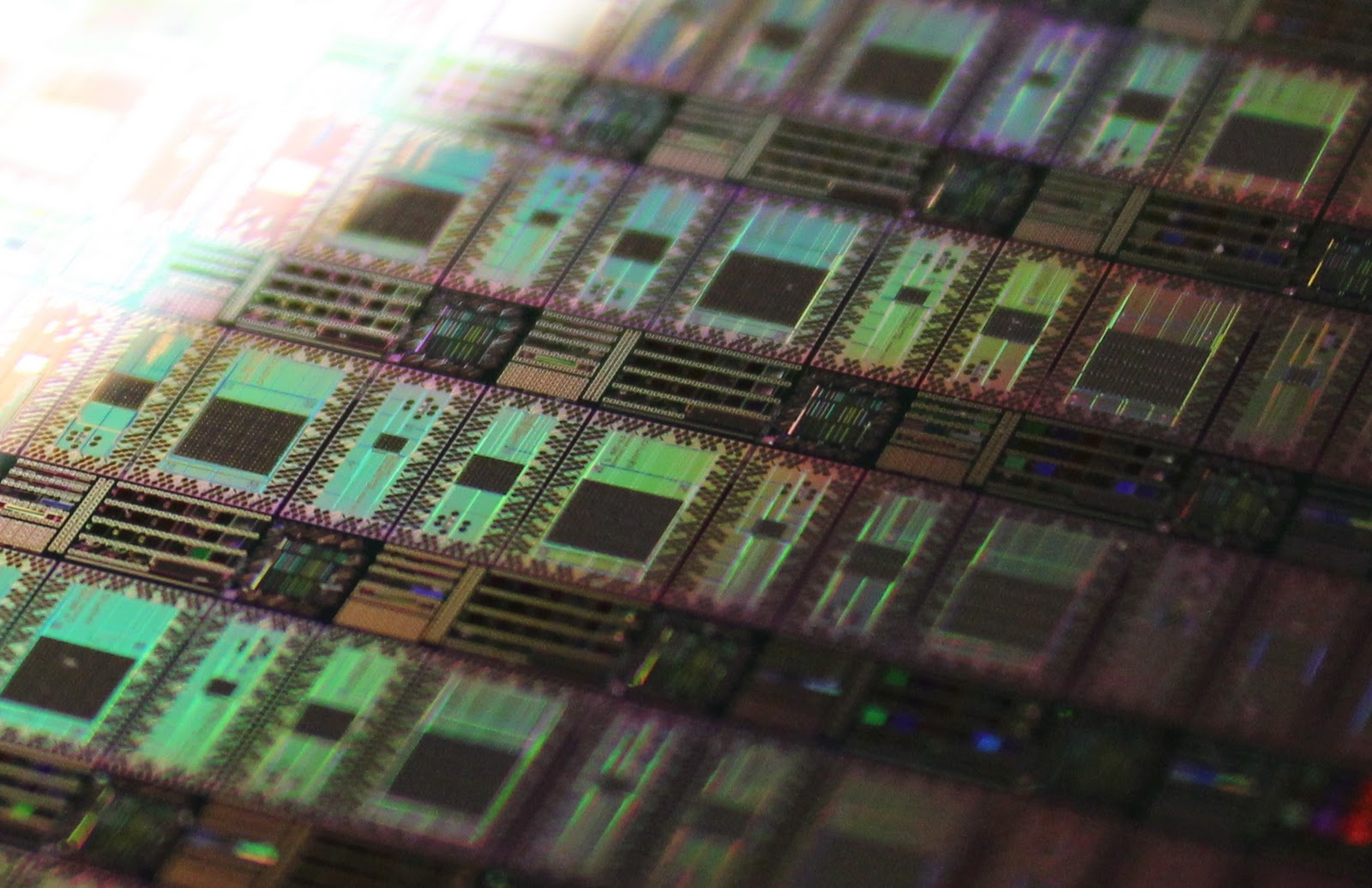The field of biotechnology stands as one of the most transformative forces of the 21st century, fundamentally reshaping the landscape of healthcare and beyond. Leveraging living organisms, biological systems, and cellular processes, biotech innovations are revolutionizing medicine, agriculture, and industry at an unprecedented pace. From groundbreaking gene therapies that cure previously untreatable diseases to advanced diagnostics that personalize treatment, biotechnology is offering solutions that were once confined to the realm of science fiction. This isn’t just about incremental improvements; it’s a profound paradigm shift towards a future where health is more personalized, diseases are more preventable, and life itself is extended and enhanced through the incredible power of biological science, truly reshaping healthcare as we know it.
The Genesis of Biotech: From Fermentation to DNA
To truly grasp the revolutionary impact of modern biotechnology, it’s essential to trace its historical roots, understanding how humanity has harnessed biological processes for millennia, culminating in today’s sophisticated genetic engineering.
A. Ancient Foundations: Harnessing Microbes and Nature
Even without understanding the underlying science, early civilizations practiced rudimentary forms of biotechnology.
- Fermentation: Ancient civilizations utilized microbes for thousands of years to produce essential goods. This included making bread (yeast), cheese (bacteria), beer, and wine (yeast). These processes rely on the biological activity of microorganisms to transform raw materials.
- Selective Breeding: Farmers and herders practiced selective breeding of plants and animals for desirable traits (e.g., higher yield, disease resistance, better temperament). This was an early form of genetic manipulation, albeit unconscious and slow.
- Herbal Medicine: Traditional medicine systems around the world relied heavily on plant-based remedies, extracting bioactive compounds from nature to treat ailments.
These early applications demonstrated an intuitive understanding that living systems could be harnessed for human benefit, laying conceptual groundwork for future discoveries.
B. The Scientific Revolution and Classical Biotechnology
The development of modern science in the 19th and 20th centuries brought a more systematic understanding of biological processes, giving rise to “classical biotechnology.”
- Louis Pasteur’s Discoveries: Pasteur’s work on fermentation, pasteurization, and germ theory in the mid-19th century elucidated the role of microorganisms, laying the foundation for microbiology and sterile techniques in medicine and food production.
- Antibiotics (Penicillin): Alexander Fleming’s discovery of penicillin in 1928, and its subsequent mass production during World War II, revolutionized medicine by effectively treating bacterial infections. This demonstrated the immense therapeutic power of biologically derived substances.
- Industrial Fermentation: Large-scale industrial processes emerged to produce chemicals (e.g., citric acid, ethanol) and pharmaceuticals using microbial fermentation, moving beyond traditional food products.
- Vaccine Development: Early vaccine development (e.g., smallpox) involved using attenuated or killed pathogens to stimulate immunity, a foundational biotechnological application in public health.
This era marked a shift from empirical observation to scientific manipulation of biological systems, but still largely at the macro or cellular level.
C. The DNA Revolution: Modern Biotechnology Unveiled
The true explosion of modern biotechnology began with the understanding of DNA, unlocking the ability to manipulate life at its most fundamental level.
- Discovery of DNA Structure (1953): Watson and Crick’s elucidation of the double helix structure of DNA provided the blueprint for life, revealing how genetic information is stored and replicated.
- Recombinant DNA Technology (1970s): The ability to cut and paste DNA from different organisms (gene splicing) allowed scientists to engineer bacteria to produce human proteins (e.g., insulin) or modify plants for specific traits. This was the birth of genetic engineering.
- Polymerase Chain Reaction (PCR – 1980s): Kary Mullis’s invention of PCR allowed for the rapid amplification of DNA segments, a crucial tool for genetic research, diagnostics, and forensics.
- Human Genome Project (1990-2003): The monumental effort to map the entire human genome provided a foundational database for understanding human biology, disease, and the potential for personalized medicine.
- CRISPR-Cas9 Gene Editing (2012): This revolutionary gene-editing tool provided scientists with an unprecedentedly precise, efficient, and affordable way to modify genes, opening up vast possibilities for treating genetic diseases, engineering crops, and conducting fundamental biological research.
This rapid progression, particularly since the mid-20th century, has propelled biotechnology into its current status as a cutting-edge field with the power to truly reshape healthcare and many other sectors.
Core Pillars of Modern Biotechnology Reshaping Healthcare
Today’s biotechnology leverages a diverse set of sophisticated tools and approaches to diagnose, treat, and prevent diseases, moving healthcare into an era of unprecedented personalization and precision.
A. Genomics and Proteomics: Decoding Life’s Instructions
Understanding the entire genetic makeup (genome) and the complete set of proteins (proteome) of an organism is foundational to personalized medicine.
- Personalized Medicine: Analyzing an individual’s genetic profile to predict disease risk, select the most effective drugs and dosages, and avoid adverse drug reactions. This moves away from a ‘one-size-fits-all’ approach to highly tailored treatments.
- Disease Diagnostics: Identifying genetic predispositions to diseases (e.g., certain cancers, Alzheimer’s) long before symptoms appear. Developing highly sensitive and specific diagnostic tests for infectious diseases or genetic disorders based on unique DNA/RNA markers.
- Drug Target Identification: By understanding the genes and proteins involved in disease pathways, genomics and proteomics help identify novel targets for drug development, leading to more effective and targeted therapies.
- Pharmacogenomics: Studying how an individual’s genes affect their response to drugs. This guides prescribing decisions, ensuring patients receive medications that are most likely to work for them.
B. Gene and Cell Therapies: Correcting at the Source
These therapies are revolutionary as they aim to treat diseases by addressing their root cause at the genetic or cellular level, rather than just managing symptoms.
- Gene Therapy: Introducing, modifying, or removing genes from a patient’s cells to treat or prevent disease. This includes:
- CRISPR-Cas9: Precision editing of specific genes to correct mutations causing genetic disorders (e.g., sickle cell anemia, cystic fibrosis).
- Viral Vectors: Using modified viruses to deliver healthy genes into cells.
- Applications: Showing immense promise for rare genetic diseases, certain cancers, and inherited blindness.
- Cell Therapy: Transferring cells with specific functions into a patient’s body to treat a disease.
- CAR T-Cell Therapy: Engineering a patient’s own T-cells to recognize and attack cancer cells, showing remarkable success in certain blood cancers.
- Stem Cell Therapy: Using stem cells (which can differentiate into various cell types) to regenerate damaged tissues or organs, applicable in conditions like spinal cord injuries or heart disease.
- Regenerative Medicine: A broader field that aims to repair, replace, or regenerate damaged cells, tissues, or organs, often employing principles of cell therapy and tissue engineering.
C. Biopharmaceuticals and Biologics: Drugs from Living Systems
Unlike traditional small-molecule drugs synthesized chemically, biopharmaceuticals are large, complex molecules produced by living organisms (cells, bacteria, yeast).
- Monoclonal Antibodies (mAbs): Engineered antibodies that specifically target disease-causing cells or proteins. They are widely used in cancer therapy, autoimmune diseases (e.g., rheumatoid arthritis), and increasingly for infectious diseases (e.g., COVID-19 treatments).
- Recombinant Proteins: Genetically engineered proteins like human insulin, growth hormones, or clotting factors, essential for treating diabetes, growth disorders, and hemophilia, respectively.
- Vaccines: Modern vaccines are increasingly developed using biotechnological methods (e.g., recombinant DNA technology, mRNA technology), enabling faster development and more effective protection against infectious diseases.
- Therapeutic Enzymes: Enzymes produced biotechnologically to replace missing or deficient enzymes in patients with rare metabolic disorders.
D. Advanced Diagnostics and Biosensors: Early and Accurate Detection
Biotechnology is continually advancing the precision and speed of disease detection, enabling earlier intervention and better outcomes.
- Liquid Biopsies: Non-invasive tests that detect cancer DNA or cells circulating in the blood, allowing for early cancer detection, monitoring treatment effectiveness, and identifying recurrence without invasive tissue biopsies.
- Point-of-Care Testing (POCT): Rapid diagnostic tests that can be performed outside a traditional lab setting (e.g., at home, in clinics), providing quick results for infectious diseases, glucose monitoring, or pregnancy.
- CRISPR-Based Diagnostics: Leveraging CRISPR’s precision for highly sensitive and specific detection of viral RNA (e.g., SARS-CoV-2), bacterial DNA, or genetic mutations.
- Biosensors: Devices that use biological components (e.g., enzymes, antibodies, DNA) to detect specific substances (e.g., pathogens, biomarkers) with high sensitivity and speed, integrated into wearables or portable devices.
E. Bioinformatics and Computational Biology: The Data Engine
The sheer volume of data generated by genomics, proteomics, and other biotech applications necessitates powerful computational tools.
- Genomic Data Analysis: Developing algorithms and software to sequence, align, and interpret massive genomic datasets, identifying genetic variations and their links to diseases.
- Drug Discovery and Design: Using computational modeling and AI to screen millions of compounds, predict drug-target interactions, and design new molecules more efficiently, accelerating the drug development process.
- Protein Structure Prediction: Predicting the 3D structure of proteins from their amino acid sequence, crucial for understanding protein function and designing drugs that interact with them.
- Systems Biology: Integrating diverse biological data (genomic, proteomic, metabolomic) to build comprehensive models of entire biological systems (e.g., a cell, an organ), providing a holistic understanding of health and disease.
Transformative Impacts of Biotechnology on Healthcare
The innovations stemming from biotechnology are having a profound and multi-faceted impact, fundamentally reshaping how we approach health, disease, and medical intervention.
A. Unprecedented Precision and Personalization in Medicine
Biotech is driving the move from broad treatments to highly targeted interventions tailored to individual patients.
- Targeted Therapies: Drugs and therapies designed to act specifically on molecular targets involved in disease, minimizing side effects and improving efficacy (e.g., precision oncology drugs that target specific cancer mutations).
- Individualized Treatment Plans: Based on genetic makeup, lifestyle, and real-time health data, treatments can be customized for each patient, optimizing outcomes and reducing trial-and-error approaches.
- Pharmacogenomics in Practice: Using genetic information to determine optimal drug dosages and predict adverse reactions, making prescribing safer and more effective.
B. Revolutionizing Disease Prevention and Early Detection
By understanding predispositions and enabling earlier detection, biotech shifts the focus towards preventing disease before it manifests.
- Genetic Screening: Identifying individuals at high risk for certain diseases (e.g., inherited cancers, cardiovascular conditions) through genetic screening, allowing for proactive lifestyle changes, increased surveillance, or preventative interventions.
- Early Diagnostic Biomarkers: Discovery of novel biomarkers that can indicate the presence of disease at its earliest stages, when treatment is most effective (e.g., blood tests for early cancer detection).
- Vaccine Development Acceleration: The speed and adaptability of biotechnologically produced vaccines (e.g., mRNA vaccines) significantly improve our ability to respond to emerging infectious disease threats.
C. Curing Previously Untreatable Diseases
Gene and cell therapies offer the tantalizing prospect of curing diseases that were once considered incurable, offering hope to millions.
- Genetic Disorders: Providing potential cures for single-gene disorders like cystic fibrosis, sickle cell anemia, and Huntington’s disease by correcting the underlying genetic defect.
- Certain Cancers: Breakthroughs in immunotherapies and CAR T-cell therapy are showing remarkable success in achieving long-term remissions for specific types of leukemia and lymphoma, where traditional treatments failed.
- Regenerative Potential: Repairing damaged tissues in conditions like heart failure, Parkinson’s disease, or spinal cord injuries, restoring function and improving quality of life.
D. Enhancing Drug Discovery and Development Efficiency
Biotechnology streamlines and accelerates the notoriously long, expensive, and high-risk process of bringing new drugs to market.
- Targeted Drug Design: Bioinformatics and structural biology allow for rational drug design, focusing on specific molecular targets, which increases the likelihood of success and reduces trial-and-error.
- Accelerated Screening: High-throughput screening using robotic systems and advanced assays allows for rapid testing of millions of compounds against disease targets.
- Reduced Clinical Trial Failures: Better understanding of disease mechanisms and patient stratification (using genetic markers) can lead to more effective drugs entering clinical trials, reducing costly late-stage failures.
- Biomanufacturing Scale: Efficient biomanufacturing processes allow for the scalable production of complex biopharmaceuticals, making these advanced drugs widely available.
E. Strengthening Public Health and Pandemic Preparedness
Biotechnology is critical for global health security and our ability to respond to widespread health crises.
- Rapid Pathogen Identification: Advanced genomic sequencing tools can quickly identify new pathogens and track their evolution (e.g., SARS-CoV-2 variants), informing public health responses.
- Pandemic Response: The ability to rapidly design and produce vaccines (e.g., mRNA technology for COVID-19) and diagnostic tests is a direct outcome of biotechnological advancements, crucial for mitigating future pandemics.
- Antimicrobial Resistance (AMR) Solutions: Biotech is key to discovering new antibiotics and alternative antimicrobial strategies (e.g., phage therapy) to combat the growing threat of drug-resistant bacteria.
Challenges and Ethical Considerations in Biotechnology
Despite its immense promise, the rapid pace of biotechnological innovation brings with it significant scientific, economic, and profound ethical challenges that society must carefully navigate.
A. High Costs and Accessibility
Many of the most advanced biotech therapies (e.g., gene therapies, CAR T-cell therapies) come with exorbitant price tags, raising serious concerns about accessibility and equity.
- Exorbitant Treatment Costs: Single-dose gene therapies can cost millions of dollars, making them inaccessible to the majority of patients and straining healthcare systems globally.
- Limited Manufacturing Capacity: Producing complex biologics and cell therapies at scale is challenging, often involving highly specialized facilities and skilled personnel, contributing to high costs and limited availability.
- Reimbursement Challenges: Healthcare payers (governments, insurance companies) struggle with how to fund these high-cost, potentially curative therapies, leading to debates about value-based pricing and innovative payment models.
- Global Health Equity: The disparity in access to advanced biotech treatments between developed and developing nations could exacerbate global health inequalities.
B. Complex Regulatory and Approval Processes
Bringing novel biotech products to market is a rigorous, lengthy, and expensive process due to stringent regulatory requirements.
- Safety Concerns: Gene and cell therapies are new, with potential long-term side effects that are still being studied. Regulators (e.g., FDA, EMA) must ensure their safety and efficacy through extensive clinical trials.
- Ethical Oversight: Technologies like gene editing raise profound ethical questions that regulators must grapple with, leading to careful and often slow approval pathways.
- International Harmonization: Differences in regulatory frameworks across countries can create hurdles for global biotech companies, slowing down market access.
C. Ethical Dilemmas and Societal Implications
The power to manipulate life at its fundamental level raises deep ethical questions that require careful societal deliberation.
- Germline Editing: The ability to make heritable changes to the human genome (germline editing) sparks fears of ‘designer babies’ and irreversible alterations to the human gene pool, leading to widespread calls for moratoria or bans.
- Genetic Discrimination: Concerns about potential discrimination in employment, insurance, or social contexts based on an individual’s genetic predispositions.
- Synthetic Biology: The ability to create entirely new life forms or modify existing ones extensively raises questions about unintended ecological consequences or misuse for bioweapons.
- Patient Autonomy and Informed Consent: Ensuring truly informed consent for complex genetic therapies, especially when the long-term outcomes are still uncertain.
- Access and Equity: As mentioned, the ethical imperative to ensure these life-changing therapies are accessible to all who need them, not just the wealthy.
D. Scientific and Technical Hurdles
Despite rapid progress, significant scientific and technical challenges remain in biotech.
- Off-Target Effects (Gene Editing): Ensuring gene-editing tools precisely target only the intended genes without causing unintended changes elsewhere in the genome.
- Delivery Mechanisms: Safely and efficiently delivering gene therapies or therapeutic cells to the specific tissues or organs where they are needed within the body remains a major challenge.
- Immunogenicity: The body’s immune system can sometimes recognize gene therapy vectors or transplanted cells as foreign, leading to an immune response that negates the therapy.
- Complex Biological Systems: Our understanding of the intricate interactions within biological systems is still incomplete, making it challenging to predict all the consequences of genetic or cellular interventions.
E. Intellectual Property and Commercialization
The high investment and risk involved in biotech necessitate robust intellectual property protection, but this also creates challenges.
- Patent Litigation: Fierce competition and complex technologies often lead to extensive patent litigation, particularly in areas like gene editing.
- Balancing Innovation and Access: The need to protect intellectual property to incentivize innovation must be balanced with the societal need for affordable access to life-saving therapies.
The Future Trajectory: Biotechnology’s Continued Evolution
The trajectory of biotechnology is one of accelerating innovation, deeper integration with other technologies, and an expanding impact across healthcare and beyond.
A. Hyper-Personalized and Proactive Healthcare
The future will see healthcare become even more personalized and proactive, driven by biotech.
- Continuous Health Monitoring: Wearable biosensors and implantable devices will provide continuous, real-time health data, enabling early detection of disease markers and personalized interventions before symptoms appear.
- ‘Digital Twin of a Human’: Sophisticated digital models of individual patients, integrating genomic data, real-time biometrics, lifestyle factors, and medical history, to predict health trajectories and optimize preventive and therapeutic strategies.
- AI-Driven Diagnostics and Drug Discovery: AI will play an even larger role in analyzing complex biological data for diagnostics, identifying novel drug targets, and designing new molecules at an unprecedented pace and precision.
B. Advanced Gene Editing and Beyond CRISPR
While CRISPR is revolutionary, research is pushing the boundaries of gene editing even further.
- Base Editing and Prime Editing: Newer gene-editing technologies that allow for even more precise, single-base changes or larger insertions/deletions without cutting the DNA double helix, reducing off-target effects.
- Epigenetic Therapies: Modifying gene expression without changing the underlying DNA sequence, offering another layer of therapeutic intervention for diseases influenced by epigenetics.
- In Vivo Gene Therapy: Developing ways to deliver gene therapies directly into the body without needing to extract cells, making treatments less invasive and more accessible.
C. Synthetic Biology and Bio-Manufacturing
The ability to design and engineer new biological parts, devices, and systems will lead to revolutionary applications.
- Designer Microbes: Engineering bacteria or yeast to produce novel drugs, vaccines, biofuels, or sustainable materials more efficiently and cost-effectively.
- Cellular Factories: Designing cells to act as miniature factories for producing complex biomolecules or even entire tissues.
- Bio-Computation: Exploring the use of biological systems for computing (e.g., DNA computing) for highly specialized applications.
- Sustainable Bio-Production: Leveraging synthetic biology to create sustainable alternatives to petrochemicals, plastics, and traditional food production (e.g., lab-grown meat).
D. Quantum Biology and Quantum Computing in Biotech
The intersection of quantum mechanics and biology could unlock entirely new understandings and capabilities.
- Quantum Biology: Exploring whether quantum phenomena play a role in biological processes (e.g., enzyme catalysis, photosynthesis), potentially leading to new insights into disease mechanisms.
- Quantum Drug Discovery: Quantum computers could simulate molecular interactions at an unprecedented level of detail, accelerating the discovery of new drugs and materials.
- Accelerated Genomic Analysis: Quantum algorithms could potentially speed up the analysis of massive genomic datasets, enabling faster personalized medicine applications.
E. Converging Technologies (Bio-Convergence)
Biotechnology will increasingly converge with other cutting-edge fields, creating powerful synergistic effects.
- Neurotech: Merging biotech with neuroscience and engineering to develop brain-computer interfaces (BCIs) for treating neurological disorders, restoring lost function, or augmenting human capabilities.
- Nanotechnology: Developing nanoscale devices (nanobots) for targeted drug delivery, in-vivo diagnostics, or surgical precision at the cellular level.
- Bioinformatics and AI: The continued exponential growth in computational power and AI algorithms will be fundamental to handling and interpreting the vast, complex datasets generated by biological research.
- Robotics and Automation: Automated labs and robotic systems will accelerate biotech research, drug screening, and biomanufacturing processes, increasing throughput and precision.
Conclusion
Biotechnology, born from ancient observations and propelled by modern scientific breakthroughs, is profoundly reshaping healthcare and the very definition of life itself. From unraveling the complexities of the human genome to precisely editing the blueprint of life, and from producing life-saving biologics to developing highly personalized therapies, biotech is delivering solutions that were once unimaginable. It offers unprecedented precision in diagnosis, the potential to cure previously untreatable diseases, and a robust framework for preventing future health crises.
While the journey ahead is fraught with significant challenges—including the ethical complexities of genetic manipulation, the prohibitive costs of advanced therapies, and the need for robust regulatory frameworks—the imperative to harness this power for human well-being remains undeniable. The future trajectory of biotechnology points towards hyper-personalized healthcare, even more precise gene editing, the rise of synthetic biology for sustainable production, and a powerful convergence with AI, quantum computing, and nanotechnology. By navigating these complexities with careful ethical consideration, strategic investment, and collaborative spirit, biotechnology will continue to unlock astonishing possibilities, ensuring a future where health is increasingly empowered by the profound and transformative insights of biological science.














